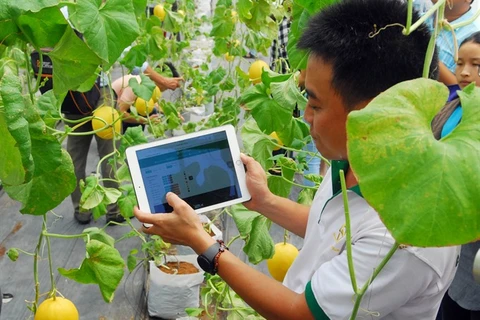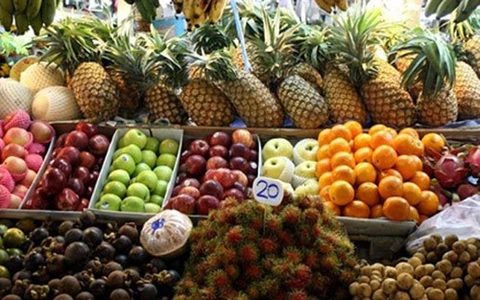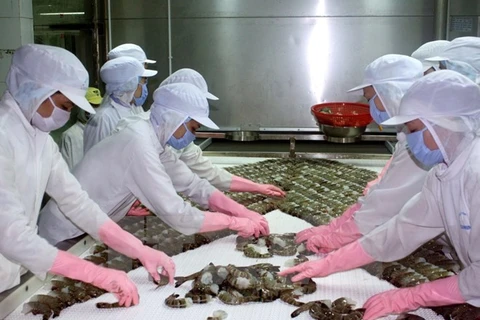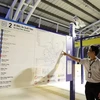Hanoi (VNA) – Vietnam had 8,978 communes and 79,899 hamlets as of July 1, 2016, representing decreases of 93 and 1,005 respectively from five years ago, according to the preliminary outcomes of the latest rural, agricultural and fisheries survey, which was released in late December 2016.
Deputy head of the General Statistics Office Pham Quang Vinh said the reduction is attributable to rapid urbanization.
The national electricity grid has reached all communes, which was a significant achievement of the national programme to bring electricity to rural, mountainous, and island areas.
The rural transport system witnessed strong development in both quantity and quality. As of July 1, 2016, 8,927 communes (or 99.4 percent) had automobile-accessible roads.
At the same time, 99.6 percent of communes have kindergartens and 99.7 percent have primary schools. Additionally, 58.6 percent of communes have cultural houses and 99.5 percent have medical stations.
A total of 2,069 communes fulfilled criteria for new rural areas.
The preliminary statistics also showed that 60.8 percent of communes nationwide have markets (compared to 57.6 percent in 2011), of which the Red River Delta recorded the highest rate of 72.9 percent (compared to 64.8 percent in 2011), and the Central Highlands registered the lowest proportion of 37.7 percent.
Additionally, 80.5 percent of communes have stores supplying agro-forestry-fishery varieties and material for farmers across the country.
Cooperatives have been set up in 2,479 communes to support production development, making up 27.6 percent of the total nationwide communes. The Mekong Delta led in the field with 84.3 percent of communes, followed by the south eastern region, 61.5 percent.
However, in some mountainous provinces, the rate of hamlets yet to be connected to electricity is still high, such as Dien Bien (14.7 percent), Ha Giang (11.1 percent), Son La (10.9 percent), Lao Cai (10.4 percent), and Bac Kan (8.5 percent).
The transport system in some remote, mountainous and island areas remain undeveloped, especially in the northern midland and mountainous parts of the country.
The country is now home to 9.32 million households engaging in agriculture, forestry and fisheries production. The number of farms and large-scale paddy fields is on the upward trend.
The official outcomes of the survey will be announced in the third quarter of 2017./.
Deputy head of the General Statistics Office Pham Quang Vinh said the reduction is attributable to rapid urbanization.
The national electricity grid has reached all communes, which was a significant achievement of the national programme to bring electricity to rural, mountainous, and island areas.
The rural transport system witnessed strong development in both quantity and quality. As of July 1, 2016, 8,927 communes (or 99.4 percent) had automobile-accessible roads.
At the same time, 99.6 percent of communes have kindergartens and 99.7 percent have primary schools. Additionally, 58.6 percent of communes have cultural houses and 99.5 percent have medical stations.
A total of 2,069 communes fulfilled criteria for new rural areas.
The preliminary statistics also showed that 60.8 percent of communes nationwide have markets (compared to 57.6 percent in 2011), of which the Red River Delta recorded the highest rate of 72.9 percent (compared to 64.8 percent in 2011), and the Central Highlands registered the lowest proportion of 37.7 percent.
Additionally, 80.5 percent of communes have stores supplying agro-forestry-fishery varieties and material for farmers across the country.
Cooperatives have been set up in 2,479 communes to support production development, making up 27.6 percent of the total nationwide communes. The Mekong Delta led in the field with 84.3 percent of communes, followed by the south eastern region, 61.5 percent.
However, in some mountainous provinces, the rate of hamlets yet to be connected to electricity is still high, such as Dien Bien (14.7 percent), Ha Giang (11.1 percent), Son La (10.9 percent), Lao Cai (10.4 percent), and Bac Kan (8.5 percent).
The transport system in some remote, mountainous and island areas remain undeveloped, especially in the northern midland and mountainous parts of the country.
The country is now home to 9.32 million households engaging in agriculture, forestry and fisheries production. The number of farms and large-scale paddy fields is on the upward trend.
The official outcomes of the survey will be announced in the third quarter of 2017./.
VNA























